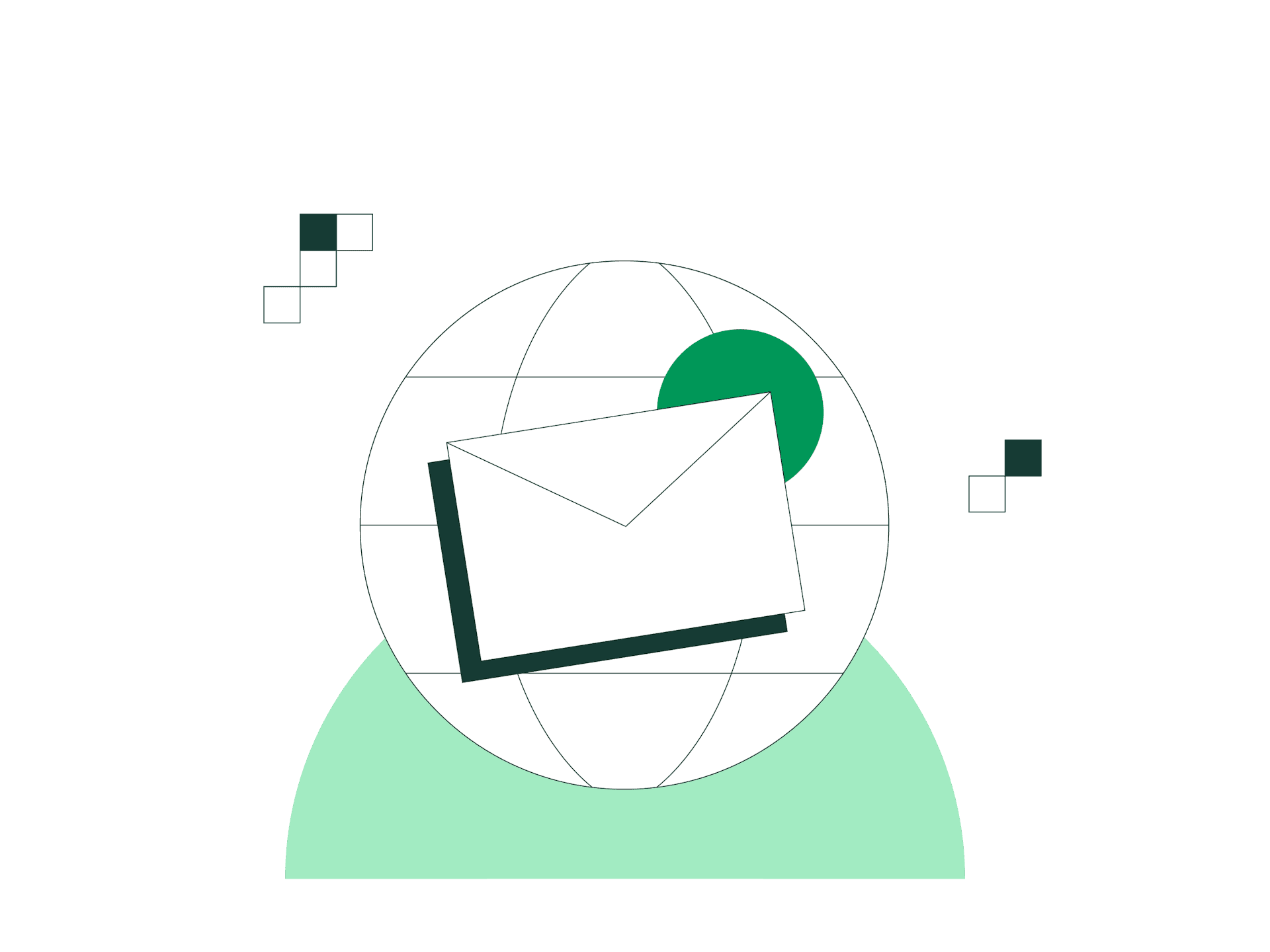What if every day ended with a few moments of calm and quiet reflection instead of worrying over a looming stack of invoices? It might sound a bit far-fetched, but when you start automating tasks like invoicing, you can turn them into opportunities for growth and free your time and mind to focus on other issues.
That’s just one benefit of invoice automation. Let’s take a look at a few more and also understand what to consider before getting started.
What is invoice automation?
Invoice automation is pretty much what it says. It’s when you use technology to digitalise and automate the invoicing process. It involves using e-invoicing software or services to undertake tasks traditionally handled manually, such as data capture, validation, and approvals.
Automated invoicing quickens the invoicing process and minimises manual work, paving the way for heightened efficiency, improved accuracy, and streamlined operations. Additionally, it frees up time to concentrate on strategic initiatives and high-impact activities instead of mundane, repetitive tasks.
How does invoice automation work?
Invoice automation streamlines the invoicing process, but it will look different depending on whether you want to address your outgoing invoices (Accounts Receivable or AR) or incoming invoices (Accounts Payable or AP). Here’s the general breakdown.
Accounts Receivable (AR) Automation
Customer invoicing (sending invoices)
Invoice creation: The AR management cycle begins with the automatic generation of an invoice. Following the receipt of a purchase order from a buyer, the invoice is produced within your ERP system or invoicing platform, billing customers for the goods or services they have ordered, thereby eliminating the necessity for manual data entry.
Validation: Prior to dispatch to the customer, the e-invoice is subjected to an automated validation process. These digital checks confirm that the invoice complies with all established rules and standards, obviating the need for manual checking at this juncture.
Delivery to recipient: Once the invoice passes validation, it is dispatched either directly to the customer, in line with their invoicing preferences and capabilities, or to an intermediary for subsequent processing. Both pathways are designed to ensure that the transaction is executed with efficiency and smoothness, facilitated entirely by digital means.
Payment processing and collection: When the customer executes payment, and the supplier acknowledges receipt of the funds, the transaction is automatically matched and recorded against the relevant invoice(s) in the system. While this process is predominantly automated, a final review and reconciliation by staff may be requisite to guarantee precision before completion.
Accounts Payable (AP) Automation
Supplier invoicing (receiving invoices)
Invoice received: The AP management cycle starts when an invoice from a supplier is received. In an automated system, this invoice is directly received into your ERP system or payment platform in a structured data format, ensuring smooth delivery and data integrity without the need for human intervention.
Invoice matching/coding/attestation: During this phase, the invoice is carefully matched and coded against related documents, such as purchase orders or delivery notes. This is accomplished digitally, with the system automatically handling the matching and coding, ensuring the invoiced items correspond with what was ordered and delivered. However, human intervention is required for final approval once the invoice is matched and coded.
Approval: After verifying the details of the invoice, it moves to the approval stage. At this point, a person reviews and approves the invoice to confirm its accuracy, which is the only step necessitating manual input in an otherwise fully digital process.
Payment: With all necessary approvals in place, the invoice is processed for payment. This step ensures suppliers are paid on time and maintains good business relations, all while reducing the manual workload traditionally associated with this stage.
Archiving: After payment, the invoice is archived following local regulations, making it available for future references or audits, with no further manual handling required.
When considering the implementation of invoice automation, it is important to recognise that it is no one-size-fits-all process. Depending on your specific needs, the focus could be streamlining the Accounts Payable (AP) side, or Accounts Receivable (AR), or sometimes both. Even though they are closely connected, these two processes address different yet complementary aspects of a company's invoicing operations. Together, they outline a pathway to a more efficient, error-free, and strategically managed invoice flow, ultimately enhancing the financial resilience of a company.
Is invoice automation suitable for all businesses?
A common misconception is that invoice automation is a solution tailored only for large corporations with large transaction flows. The reality is that invoice automation benefits businesses of all sizes, including small and medium-sized enterprises (SMEs). While larger organisations may see more immediate financial gains due to the scale of their operations, smaller businesses can also benefit from improved efficiency, accuracy, and time savings.
SMEs that may have concerns about upfront expenses can choose from different providers that offer flexible solutions. These solutions can often be implemented gradually, enabling businesses to begin with a limited set of automation features and gradually add more as they expand. This adaptability makes it a viable option even for those operating on a small scale.
“Beyond the obvious savings on paper and postage, the real cost benefit of invoice automation lies in time savings. ”
What are the benefits of invoice automation?
There are several compelling advantages that drive the shift towards invoice processing automation. Here’s some of the most obvious:
Reducing errors and improving accuracy: The perils of manual processing range from data entry errors to missed deadlines. Automated invoice systems reduce these errors, ensuring invoices reflect accurate information and are processed in a timely manner.
Enhancing cash flow: Faster invoice approvals and quicker payments mean businesses can reduce their Days Sales Outstanding (DSO), leading to more predictable and healthier cash flows. This acceleration in the payment cycle allows businesses to put their funds to work more quickly, contributing to growth.
Cost savings: Beyond the obvious savings on paper and postage, the real cost benefit of invoice automation lies in time savings. Businesses can redirect efforts from repetitive and time-consuming manual processing to focus on more strategic tasks.
Robust security: Financial data is sacred. With cybersecurity threats on the rise, automated invoicing solutions can help secure robust security protocols, ensuring data remains uncompromised.
How does invoice automation affect supplier relationships?
One of invoice automation's less-discussed yet significant advantages is its positive impact on supplier relationships. Consistency and reliability are paramount in any business interaction, and automated invoicing systems excel in these aspects. Automation ensures timely invoice processing and payments, reducing delays that can strain supplier relations.
Automated systems can help enhance accuracy, eliminating errors that require tedious corrections and fostering smoother interactions with suppliers. This reliability can help your business stand out as a trusted partner, opening doors to long-term benefits like better payment terms and priority service.
How to choose an invoice automation vendor?
When scouting for an invoice automation solution, there are many factors to consider. They include:
Needs assessment:
- Begin by understanding your business's specific requirements.
- Consider factors like your organisational size, transaction volumes, and the specific complexities of your operations.
- Choose a provider that can meet your current and future needs. Find a flexible solution that can adapt as your business expands.
Feature exploration: Certain functionalities become crucial for businesses with an international presence or those considering global expansion. Beyond basic features, explore how the system handles automated format conversion, which is essential for seamlessly navigating diverse e-invoicing standards across countries. Additionally, check if the system provides cloud adaptability and multi-currency support. Features like these simplify international business operations and can significantly elevate the efficiency of your invoicing process.
Seamless integration: Look for a provider that enables you to seamlessly connect your current systems, whether they are ERP or accounting platforms. This kind of integration minimises manual inputs and, as a result, human error.
Interoperability: Most businesses today use a multitude of digital tools, ranging from ERPs to accounting software. It's not just about a system's ability to integrate but also the nature of its connectivity. Open networks provide a many-to-many connectivity approach, allowing systems to interact with each other, creating a dynamic and adaptable environment. In contrast, closed networks are limited to predefined systems.
When selecting an invoice automation provider, prioritise those with an open network philosophy. This way, you ensure that your business stays agile and can connect with current and future systems and infrastructures.
User experience and analytical depth: A straightforward, user-friendly interface is not just a convenience—it's fundamental for operational efficiency. Beyond the interface, it's the depth of analytics that truly empowers a business. Strong analytical capabilities provide insights and pave the way for a data-driven approach, turning data into actionable intelligence. This transition can be instrumental in refining strategies, identifying bottlenecks, and optimising overall invoicing operations
Regulatory compliance: With governments worldwide mandating e-invoicing, it's not just about keeping up with industry trends—it's about adhering to the law. Your invoicing system must not only remain compliant but also ideally stay ahead of the regulatory curve.
Seek out invoicing service providers that don't just promise compliance but proactively support it. A compliance support system is valuable. Choosing a provider with a dedicated team focused on monitoring new regulations will help ensure that you're always operating within the boundaries of the law, no matter where your business may take you.
Data security: In financial operations, security is paramount. Opt for a solution that emphasises rigorous security standards, which should include data encryption, multi-factor verification, regular security assessments, and adherence to global data safety standards.
“Once you automate your invoicing, you’ll never want to go back to a manual set-up again.”
Planning and implementing invoice automation in your business
The journey from traditional invoicing to a streamlined, automated invoicing system requires careful planning, thoughtful execution, and ongoing monitoring. Here are some key steps to help you navigate this transition successfully:
Map the current process: Begin by laying out your existing invoice process from start to finish. Understand the bottlenecks, strengths, weaknesses, and areas ripe for automation.
Set clear objectives: Armed with your insights, establish clear objectives. Whether achieving a 50% reduction in invoice processing time, aiming for a zero-error rate, or targeting a shift to 75% e-invoices within the next two years, make sure these objectives align with your broader business strategies
Create an implementation plan: Implementing invoice automation is not just about purchasing a software solution. It involves setting timelines, assigning responsibilities, training employees, and orchestrating seamless supplier onboarding. Be prepared for challenges, from employee resistance to technological hitches, and have strategies to navigate them.
Monitor and measure: Establish key performance indicators (KPIs) to gauge the efficacy of your automated invoice processing software. Consistently monitor these metrics and be prepared to refine your strategy based on the insights you gain.
The above considerations may seem daunting, but you should not have to face this alone. Your service provider should be a strategic partner in this journey. An experienced provider will assist you in every step of the implementation process, including setting goals, training and supplier onboarding. It's crucial to find a partner that understands your needs and provides guidance, ensuring a smoother transition and successful outcomes.
Why wait? Automate
Once you automate your invoicing, you’ll never want to go back to a manual set-up again. Automated invoicing can bring immediate tangible benefits like streamlined operations and robust security. See it as a strategic investment in your company's long-term success. And remember, a capable provider can be a true partner, offering valuable support every step of the way. So, take the leap. Your future operations will thank you for it.
Learn more about e-invoicing
Topics:

Stay in the loop with our newsletter

Get in touch
Interested in getting started or learning more? Leave your contact details here and we will reach out to you!
